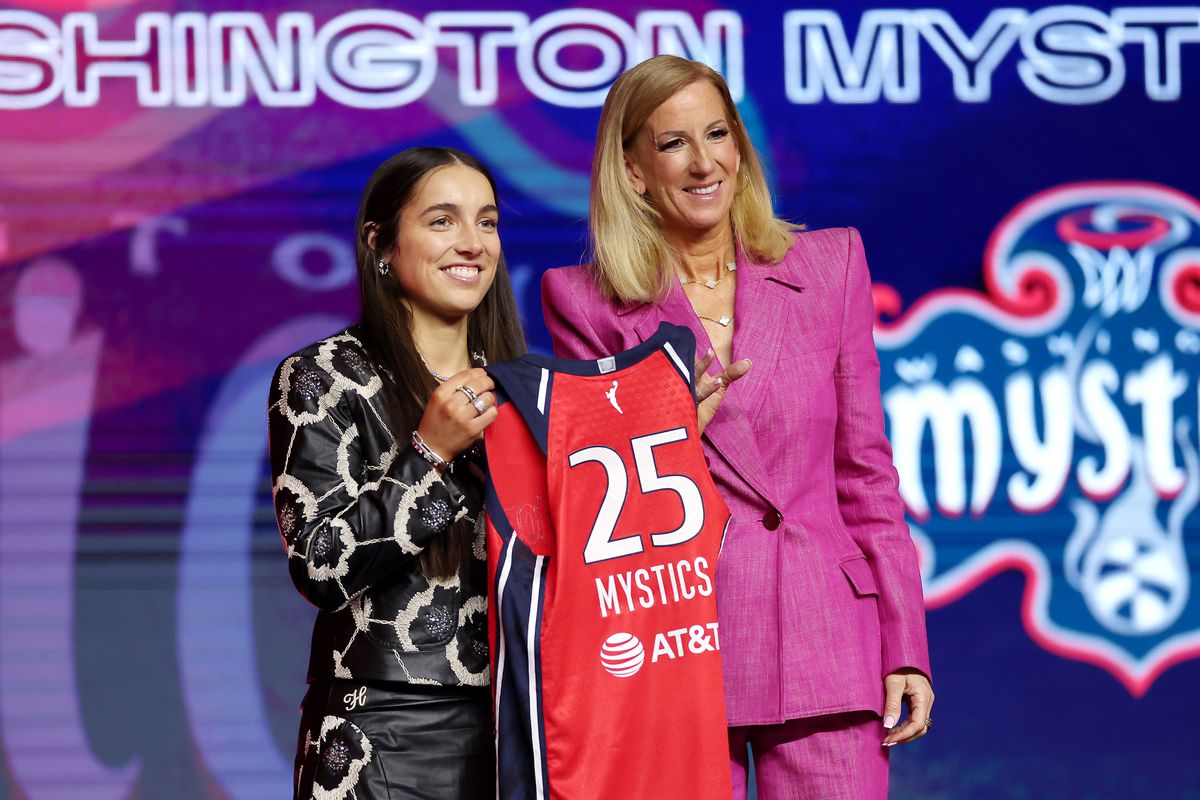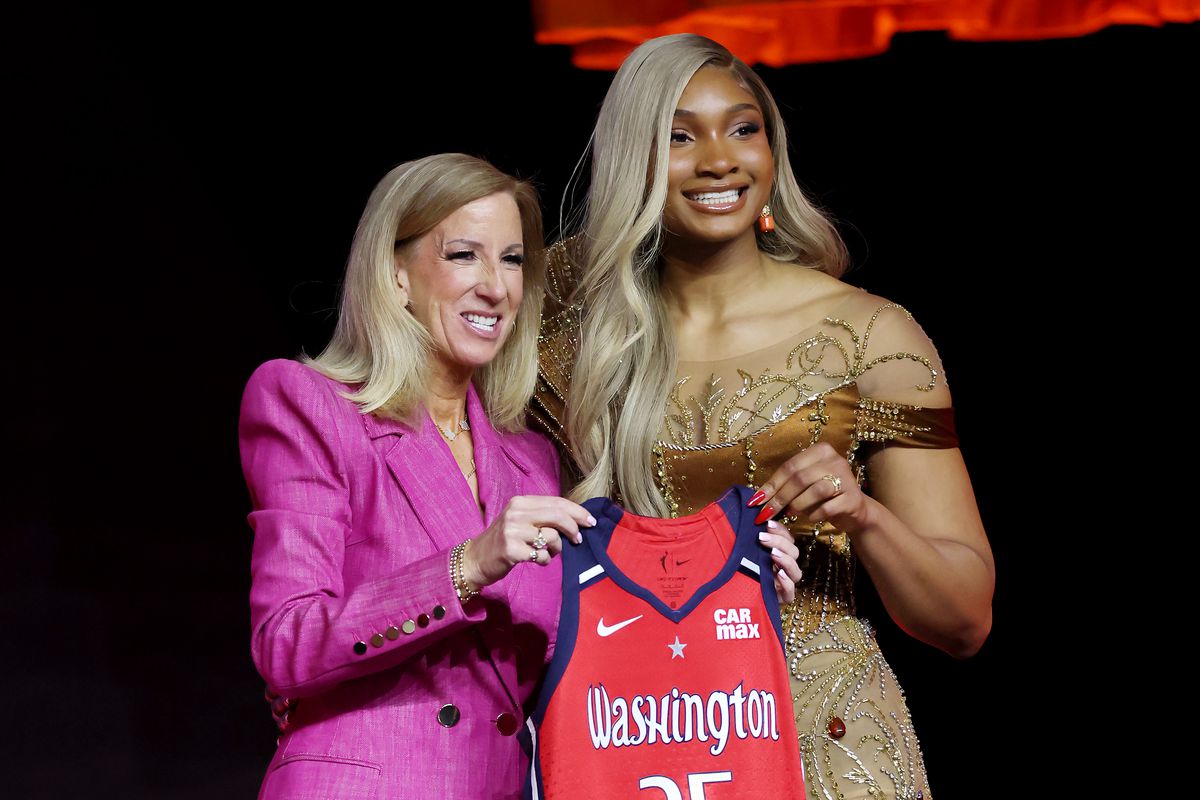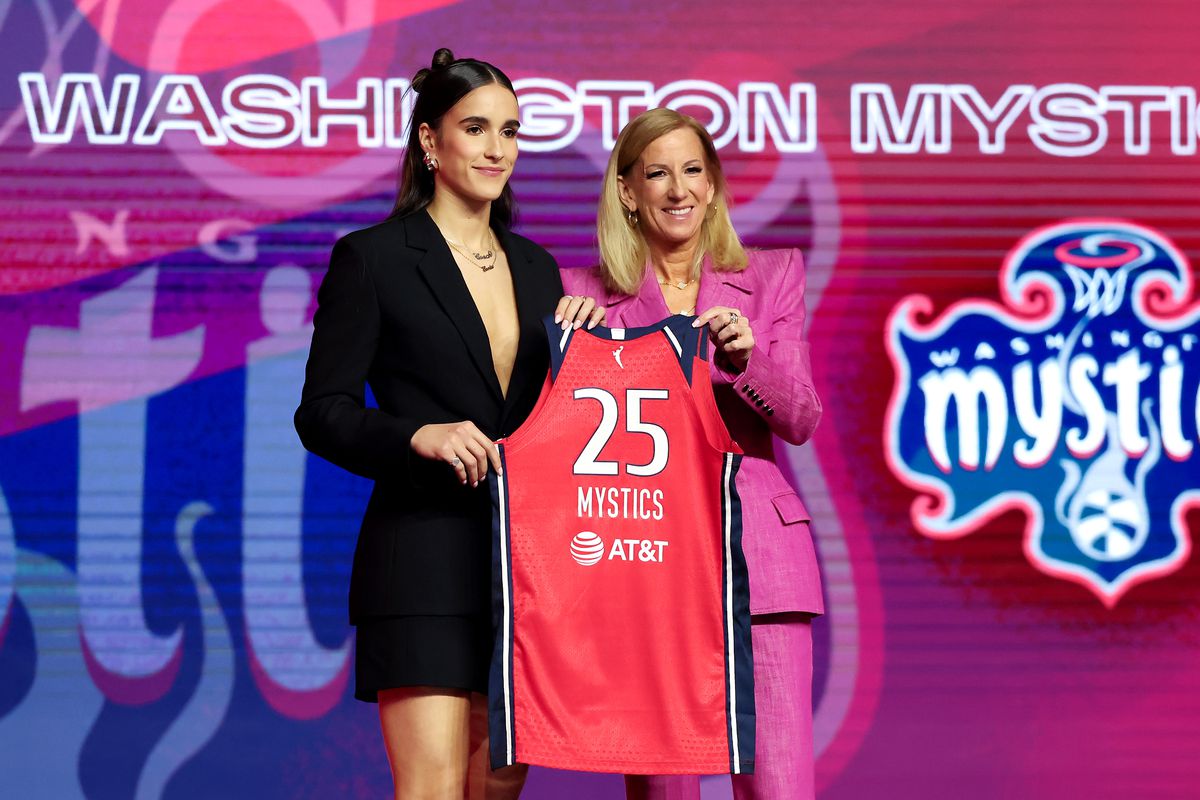The Washington Mystics boasted three top-six picks in the 2025 WNBA Draft, taking home three highly-regarded college basketball legends.
Interestingly, they selected players at three entirely different positions, which quickly begs the question: Which of the Mystics first round picks will contribute the most in their first year?
Confident in Citron
Sonia Citron is one of those “high floor, low ceiling” role player prospects that every team needs, but the No. 3 overall pick is a high price for someone who was only marginally more than an off-ball scorer in college. If she meets expectations, she’ll be a really valuable asset in DC. It’s just hard to imagine her exceeding that projection. Citron does make sense for Washington after they shipped off Karlie Samuelson, their best spot-up wing shooter, to the Minnesota Lynx for a 2026 first rounder just hours before the draft.
Citron and Samuelson also own eerily similar shooting splits. Samuelson finished her sixth WNBA season shooting 43 percent from 2, 40 percent from 3 and 92 percent from the free-throw line. Citron’s senior campaign hit at 59 percent from 2, 37 percent from 3 and 89 percent from the line. That 2-point percentage will understandably dip within the physicality of the W, but both shooters thrive off of open catch and shoot looks. Unlike the NCAA and NBA, the NCAAW and WNBA have the same three-point line distance, so being open in the pros is just like being open in college.
Citron is a great player picked at a steep price, but the shallow draft pool for ball-dominant stars isn’t a fault of the Mystics. Fans should be excited to see her take the court, and if her 3 is falling, don’t be surprised if she picks up a handful of starts at the small forward spot this season in D.C.
A more risky pick

If Sonia Citron is an emblem of consistency and certainty, Georgia Amoore is her polar opposite. The two-time All-American guard, who spent four of her five collegiate seasons at Virginia Tech before finishing her career at Kentucky, was a bonafide star in the NCAA. In her final two college seasons, she led two different Power 4 conferences (ACC, SEC) in assists per game, alongside a near 20 points per game. However, her 5-foot-6 frame and lack of top-tier athleticism doesn’t bode well for an easy WNBA transition.
Amoore is far from a guarantee, but she’s an archetype that the Mystics desperately needed. Their international hoops veteran (and 31-year-old WNBA rookie) pass-first point guard Julie Vanloo was poached by the Golden State Valkyries in the expansion draft. Brittney Sykes can play the point, but is more naturally a combo guard. Amoore will likely compete with Jade Melbourne for minutes at the 1. Melbourne, who is, ironically, two years younger than Amoore, is entering her third professional season with an impressive amount of experience for a 22-year-old. Amoore is the more talented scorer, but that’s the aspect of her game that’s least likely to translate to the W. Amoore will absolutely face the tribulations of being an undersized rookie in the world’s top league, but the Mystics rebuilding timeline and lack of depth at point guard will provide her the gift of opportunity. Amoore won’t be asked to win the Mystics a championship in year one, but could easily face more of a load than expected if she laps Melbourne on the depth chart.
Over-saturation

Iriafen was the Mystics second pick and probably the biggest new name coming to the nation’s capital, but I’m choosing to cover her situation last, as it’s the most convoluted. After reports of Domnique Malonga’s certainty at No. 2 overall, it became obvious that Iriafen would be a Mystic. As talented as she is, she’s the one first-round pick for the Mystics who will not step into a voided slot of minutes. Ariel Atkins and Karlie Samuelson’s absence opens up consistent court time for Citron. Amoore could easily inherit Vanloo’s minutes. Iriafen, a range-limited post-up forward, now has to compete for minutes with Stef Dolson, Aaliyah Edwards, Shakira Austin, Emily Engstler and Sika Koné. Whew! Engstler is only on a training camp contract, and Koné’s deal is disposable if she falls out of the rotation. Dolson, Edwards, and Austin, however, are key members of the Mystics rotation.
Under the guidance of first-year head coach Sydney Johnson, usage could quickly change to any one of the DC post players. If Iriafen shows real starter potential, which they certainly hope she will, I wouldn’t be shocked if the front office looks to deal Dolson before the deadline or chooses not to re-sign Austin after her contract expires next offseason. While the Washington guard rotation smells like a beautiful field of flowers, sunshine, and innocent opportunity, the forwards will be in a cutthroat battle to the death for minutes.
Iriafen might need to display some kind of x-factor if she wants to become a starter in her rookie year. Dolson is the best shooter and distributor of the bigs, and has abundantly more experience than the others. Edwards, through Unrivaled, has shown flashes of potential as a bigger-bodied perimeter slasher. Austin is the group’s best rebounder and defender. Iriafen needs to find a way to stand out amongst the group. Her route will likely be most similar to Austin, but she’s made clear efforts, as unsuccessful as they may have been, to grow into a floor-spacing skillset. The Mystics player development staff may have just as much of a say as Iriafen herself does, but her role will be the biggest question among the Mystics’ first-round rookies.

